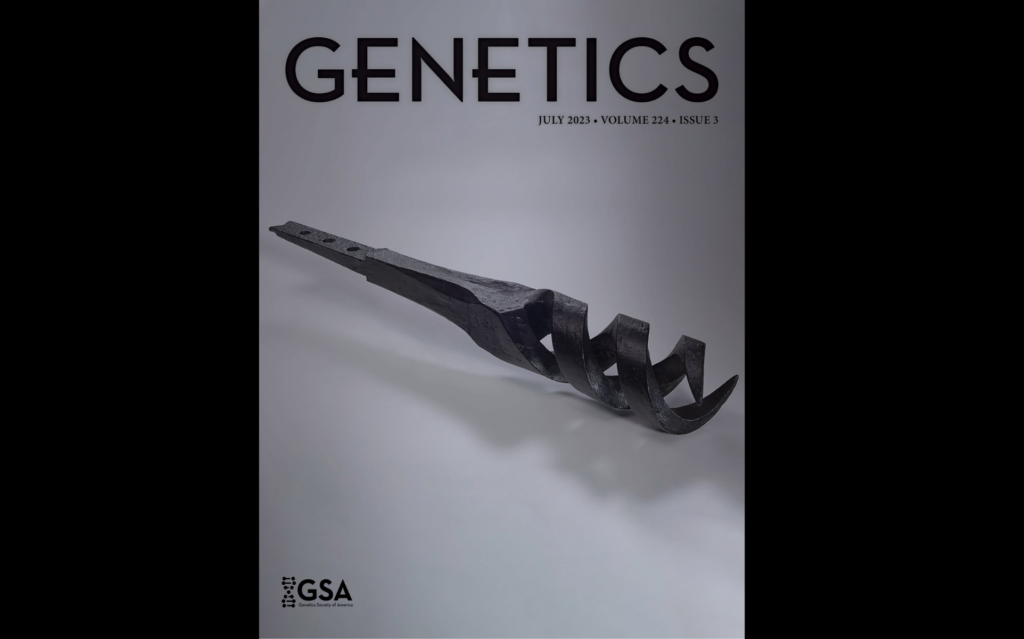Beyond understanding the admixture process behind the African American population, this model could help in uncovering African Americans’ genealogical fingerprint.
We often look to the past to understand the present. Many Americans can trace their genealogies to the 1600s, but for the African American population, understanding of our past is often halted in 1870. This “brick wall” in genealogical history is the first time most African Americans were counted in a census; before then, their enslaved African ancestors, who were forcibly imported as part of the transatlantic slave trade, were recorded as property either under their enslaver’s names or as numbers.
Now, genetic explorations of ancestry are chipping away at that brick wall. A new study by Mooney et al. published in the July issue of GENETICS can move African American genealogical understanding beyond percentages of African and European ancestry—to individuals.
Genealogical Recovery
Population genetics defines genetically admixed populations as the result of two or more source groups combining to make a new group. This new population’s ancestry will have multiple sources due to the continued genetic mixing within itself and with the source populations. The mathematical framework described by Mooney et al. considers admixture from a genealogical perspective, measuring and counting genealogical contributions to answer the question: How many ancestors from each source population contributed to a modern descendant?
The current African American population of ~47.2 million is estimated to hold some 15–25% European ancestry. Mooney et al. report that, across a range of genealogical combinations in their model, a random African American born between 1960–1965 can expect an average of 51 European or European American ancestors and 314 African ancestors over a 14-generation span, from the founding of the African American population in 1619 to the birth of the focal generation in the 1960s.
“This project has two main components,” states Noah Rosenberg, Professor of Biology at Stanford University and senior author, “One is we’re asking a new question about studying genealogies in admixed populations. We’re trying to pose the question of ‘how many individuals does that admixture represent?’”
Lead author Jazlyn Mooney, Assistant Professor of Quantitative and Computational Biology at the University of Southern California, adds that the second component of the study lies in its application—particularly to the focal population: African Americans born between 1960–1965. “A lot of the information that we’re getting about these genealogical ancestors we’re not able to recover from records.” This information is as basic as the numbers of ancestors. Mooney adds that, while the 1870 census may give some genealogical information from that period, it reports information about the already established African American population—not African ancestors. The new study focuses on uncovering information about those African ancestors: how many are there and from which generations.
To fill in some of the missing information about individual African ancestors, Mooney and colleagues built a mathematical model based on available African American genetic ancestry. They hoped to lift the veil on the genealogical and admixture history of the African American population.
To constrain the model, the authors broke the population history from 1619 to 1965 down into three demographic epochs defined by genetic data and major demographic milestones. The first epoch (1619–1808) includes the founding of the African American admixed population, with the second epoch (1808–1865) extending from the end of legal importation of enslaved African captives through the American Civil War. The second epoch shows reduced African genealogical contributions and increased European and European American genealogical contributions. The third epoch (1865–1965) begins with the end of legal enslavement and shows a reduction in European and European American genealogical contributions alongside the already low African contributions from the second epoch. This resulted in more African Americans forming deeper genealogical ties within the established African American population.
This study “gives you some sense of how many people were ancestors from Africa and survived the Middle Passage,” states Mooney. “You’re likely not going to find any sort of written information about these individuals at all.”
The study sits at the intersection of family structure, genealogy, and demography. While a mathematical model only gives a glimpse of the historical implications for the admixture events that have contributed to the African American population, it gives a much-needed new tool for thinking about demographic history.
The study also comes at a time when population geneticists are thinking about the complexities of terms like admixture and the continental labeling of ancestry—and how misreadings of these terms sometimes appear to bolster the long-repudiated idea of biological races in humans. Handling editor John Novembre adds, “In the current study’s context, the individual ancestors came from distinct parts of the globe, so the framing used has traction and relevance for the problem at hand. It is important, however, to remember that the historical ancestors came from various regions within the large landmasses of Europe and Africa, and neither of those represent monolithic units of human ancestry.”
Future applications of this mathematical framework include adding additional source populations such as Indigenous populations. The authors can also explore partitioning ancestor contributions based on sex to find the relative prevalence of male or female genealogically contributing ancestors. A version of this model can even answer similar demography questions for non-human admixed populations.
References
On the number of genealogical ancestors tracing to the source groups of an admixed population.
Mooney, Jazlyn A., Lily Agranat-Tamir, Jonathan K. Pritchard, and Noah A. Rosenberg.
GENETICS July 6, 2023; https://doi.org/10.1093/genetics/iyad079
About the Author:
Tyler Jones is an entomologist, freelance science writer, and the current Coordinator of the SciCommers Science Communication Collective. She is an experienced science communicator in person, print, and multimedia who explores how storytelling builds community and fosters connection. When not writing about science, Tyler teaches stand-up comedy at her local improv theatre.































